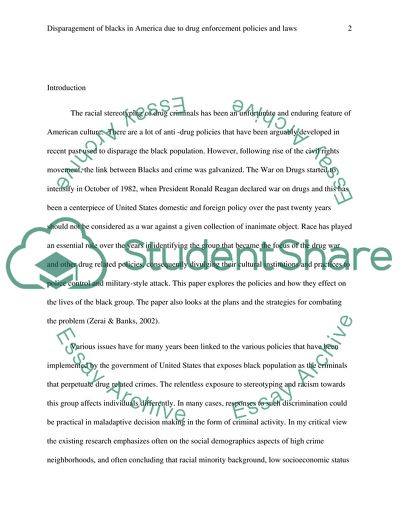Cite this document
(Disparagement of Blacks in America Due to Drug Enforcement Policies Coursework Example | Topics and Well Written Essays - 3000 words, n.d.)
Disparagement of Blacks in America Due to Drug Enforcement Policies Coursework Example | Topics and Well Written Essays - 3000 words. https://studentshare.org/sociology/1851874-disparagement-of-blacks-in-america-due-to-drug-enforcement-policies-and-laws
Disparagement of Blacks in America Due to Drug Enforcement Policies Coursework Example | Topics and Well Written Essays - 3000 words. https://studentshare.org/sociology/1851874-disparagement-of-blacks-in-america-due-to-drug-enforcement-policies-and-laws
(Disparagement of Blacks in America Due to Drug Enforcement Policies Coursework Example | Topics and Well Written Essays - 3000 Words)
Disparagement of Blacks in America Due to Drug Enforcement Policies Coursework Example | Topics and Well Written Essays - 3000 Words. https://studentshare.org/sociology/1851874-disparagement-of-blacks-in-america-due-to-drug-enforcement-policies-and-laws.
Disparagement of Blacks in America Due to Drug Enforcement Policies Coursework Example | Topics and Well Written Essays - 3000 Words. https://studentshare.org/sociology/1851874-disparagement-of-blacks-in-america-due-to-drug-enforcement-policies-and-laws.
“Disparagement of Blacks in America Due to Drug Enforcement Policies Coursework Example | Topics and Well Written Essays - 3000 Words”. https://studentshare.org/sociology/1851874-disparagement-of-blacks-in-america-due-to-drug-enforcement-policies-and-laws.


